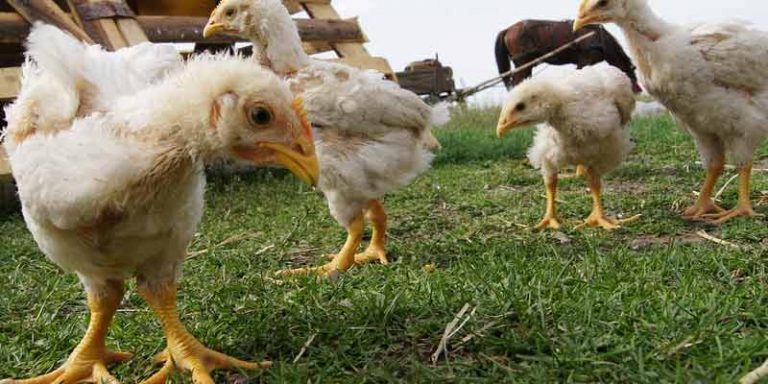There are many things to know when raising chickens. One of them is when they molt. This is a natural occurrence for chickens that happens once or twice per year. If you notice your chickens are molting, you may be wondering if they stop laying eggs.
Chickens do stop laying eggs while they’re molting. The answer is two-fold. First, the chicken is using all of her resources to nourish new feathers, which means that she can’t use those resources to lay more eggs. Second, the fact that she loses most of her feathers means that she needs to stay warm (and therefore can’t venture outdoors), which means that she can’t go look for eggs if she laid any already.
Let’s take a closer look at molting in chickens and see how you can help them lay again after molting.
How Chickens Act and Appear When They Molt
When chickens molt, they lose their feathers and grow new ones. They’ll look a bit scruffy for a while, but they’ll be fine. Molt is a natural process that happens to chickens as they age. It can happen in the winter or summer and has nothing to do with the season.
Molting can happen at any time of year, but it’s most common during the fall and spring. It’s most likely to occur when there are dramatic changes in temperature and light exposure, which may be why it happens more often during those seasons.
How Chickens Act When They Molt
Molting is stressful for chickens because they don’t have any feathers to keep them warm. The stress of molting can make them more vulnerable to the illness so make sure you pay special attention to your flock when they’re going through this process.
How Chickens Appear When They Molt
Chickens will look scruffy when they’re molting because their feathers are coming out and new ones aren’t growing back yet. You’ll notice that their combs look redder than usual because blood flows through them more easily without feathers covering them up!
When Chickens Molt, How Long Do They Stop Laying Eggs?
When chickens molt, they stop laying eggs. This is a natural occurrence that occurs every year as part of the life cycle of chickens. The length of time that it takes for chickens to molt varies with the breed but usually lasts between two and six months. In general, hens will lay fewer eggs during this time period.
Chickens are birds and they have feathers just like you have hair. When the time comes for them to molt (shed their old feathers), they will shed all of their feathers at once and grow new ones in their place.
This process can take anywhere from two weeks to six months depending on their age and breed. During this time period, you may notice that your hens’ combs turn red or pink, as well as their skin under their wings, turn pink or purple as well.
How Do You Get Chickens To Lay Again After Molting?
When chickens molt, they lose their feathers and grow new ones. This process takes about three weeks, during which time the chickens will not lay eggs. After molting is complete, the chickens’ laying cycle resumes as normal. If you want your chickens to lay again after molting early or late in the year, there are two steps you can take to encourage them to do so.
Step 1
Give your chickens plenty of water and food during the molting process. Not only does this help them replenish lost minerals, but it also helps keep them hydrated and healthy during this time when they are vulnerable to infections and parasites.
Step 2
Make sure that your chicken coop is well-ventilated to prevent mold from forming inside it as a result of wet feathers and droppings that might get caught in corners or on top of roosts after the molting season is over. This can be easy to overlook when you’re cleaning out your coop before the winter months approach, but it’s important to remember if you want your chickens’ eggs to be safe from contamination until springtime rolls around again next year.
What Should You Feed Chickens When They Molt?
During the molt, you should feed your chickens a mix of high-quality layer feed and scratch grains in order to ensure they get all the nutrients they need. A good layer feed will contain all the vitamins, minerals, proteins, and fats that your hens need during this time.
If you don’t want to buy commercial layer pellets, then you can make your own homemade chicken feed by mixing together cornmeal or cracked corn with wheat bran and rolled oats.
For molting hens, we suggest Verm-X vitamin supplement pellets; you can learn more about where to purchase them by clicking on the link below:
When and How To Use Verm-X For Hens
Verm-X is a worming treatment that can be given to all poultry, including chickens. It’s important to treat your birds regularly with the product to prevent them from becoming ill with worms.
You should administer the product once a day over a two-week period. You’ll need to give it at least two weeks before you can see any results. If you only administer it once or twice, you won’t be able to treat all of your flock effectively. If you wait too long after administering the treatment, then your flock could become reinfected with worms by eating infected droppings or food.
Conclusion
Yes, chickens stop laying eggs when they molt. They require a lot of energy and nutrition when they molt. For that reason, egg-laying is ceased until they finish molting.


